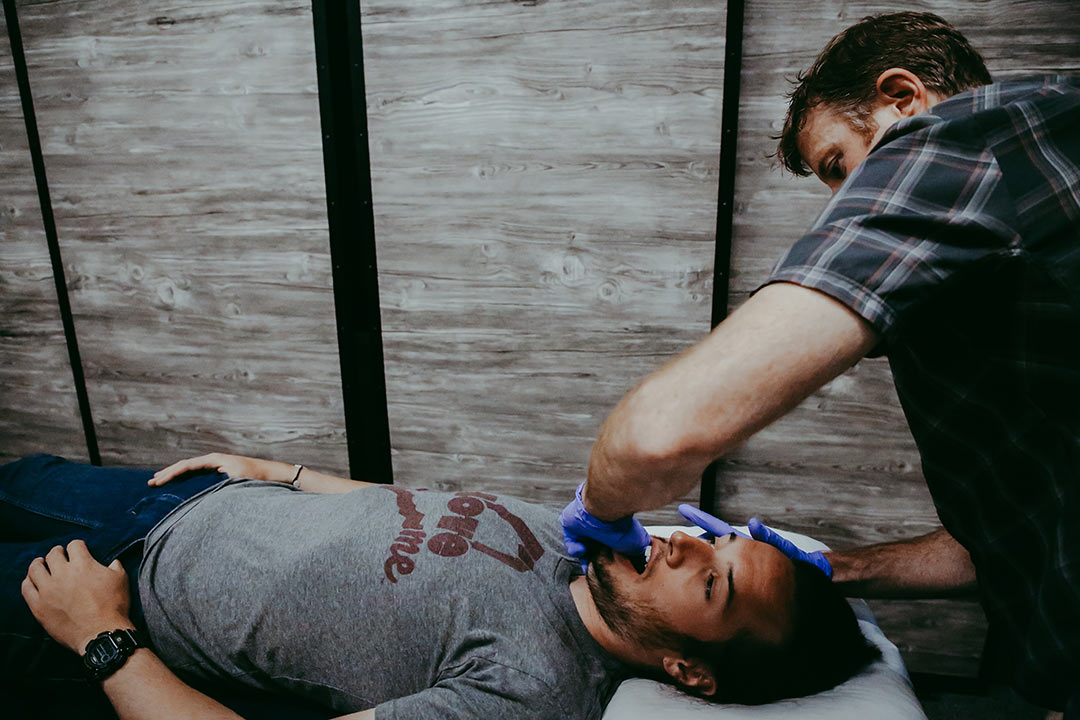Airway, TMJ & Cranial Treatment
Airway obstruction is one of the most overlooked dysfunctions in medicine, with a majority of cases going undiagnosed. Unfortunately most people think obstructive sleep apnea (OSA) means that they cannot breathe at night and they will wake up gasping for air. This is the case for severe apnea, but most individuals that suffer with OSA are not complaining of breathing problems. They have symptoms like tachy- or bradycardia, high blood pressure, IBS, chronic fatigue, joint and muscle pain, irritability, and overall lower quality of life. These clients often find their way to our clinic via pains in their body, not realizing they have stumbled upon the source of their problems–we can help! Take note that we advocate a collaborative approach to airway treatments as these cases usually require multiple practitioners.
Airway evaluation involves looking at the whole system and discovering where the dysfunction lies. From the top, the respiratory system begins in the cranium. Treatment to the cranial airway involves multiple structures. The sinuses can be treated directly via cranial bone mobilization, and indirectly via the mandible (TMJ). The tongue can be treated directly on the frenulum and musculature, or indirectly via the cranial nerves that innervate it under the mandible. The soft palate can be related directly in combination with the muscles of swallowing and chewing.

In the cervical spine, the 8 layers of fascia on the anterior neck can be treated to take compression off of the laryngeal region and the trachea itself. Correction of upper cervical vertebrae can take torsional patterns off the TMJ and throat, thus having a powerful airway effect. Treatment to the upper thoracic and lower cervical regions can affect the muscles or respiration. The dome of the lungs is also treatable here via a band of thick connective tissue that hangs from the neck and upper rib.
In the rib cage itself, we have the ability to treat all the primary and secondary muscles of respiration including the diaphragm, which may be one of the most important muscles in the body. The fissures of the lungs and pleural sack can be treated with visceral and facilitatory techniques to directly improve lung function. Often stiff thoracic vertebrae can be mobilized to make breathing easier. Treatment to the abdomen below the chest can balance the pressure systems with the pelvic organs and restore respiratory homeostasis with pelvic floor.
Finally, we will suggest any necessary lifestyle or postural changes that will help maintain function on a daily basis. The changes will be coupled with an airway exercise program, promoting healthy respiration and restful sleep, allowing you to regain your quality of life.



